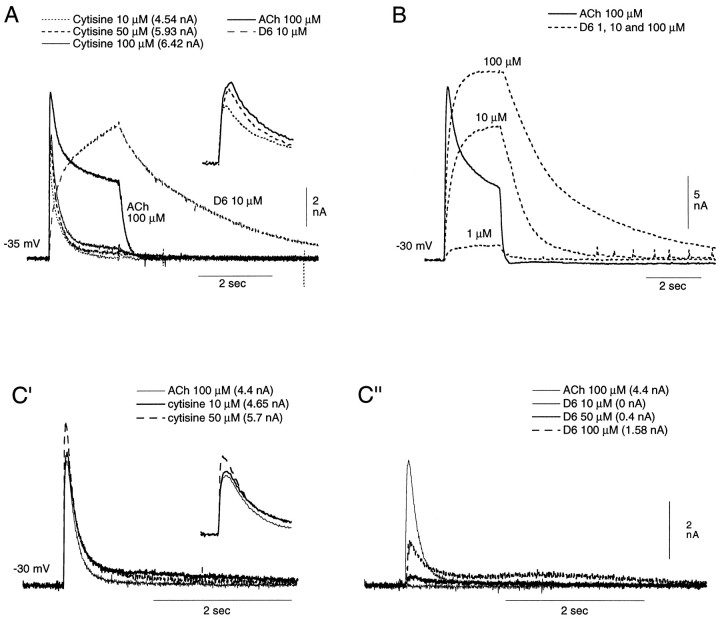Fig. 5.
Preferential activation, by cytisine and D6, of the rapidly desensitizing and sustained Cl-dependent responses, respectively. A, Comparison, in a buccal cell showing a marked sustained element in the ACh Cl-dependent response, to 100 μm ACh, 10 μm D6, and increasing concentrations of cytisine (10, 50, and 100 μm). Note that at the concentrations applied here, there is practically no evidence of a sustained Cl-dependent response to cytisine, and that the response to 10 μm cytisine (4.54 nA) is equal in amplitude to the rapidly desensitizing response to 100 μmACh (4.53 nA, obtained by subtraction of the sustained element from the total ACh response). For easier evaluation of the cytisine-induced currents, they have been reproduced in the inset with an expanded x-axis and a reduced y-axis.B, Responses of a similar buccal cell to 100 μm ACh and to increasing concentrations of suberyldicholine (1, 10, and 100 μm). Note that the sustained response to 10 μm suberyldicholine is larger than that to 100 μm ACh. C, Responses to increasing concentrations of both cytisine (C′; cytisine and ACh records presented in inset with expandedx-axis and reduced y-axis) and suberyldicholine (C") of a buccal cell showing a predominantly rapidly desensitizing response to 100 μmACh (C′ and C"). Note that the responses to all three agonists desensitize during the 2 sec application, and that the response to 10 μm cytisine (C′) is larger than that to 100 μm ACh, whereas no response can be detected to 10 μm suberyldicholine (C"). The desensitizing response to 100 μmsuberyldicholine (C") is only approximately one-third that of the response to the same concentration of ACh.

